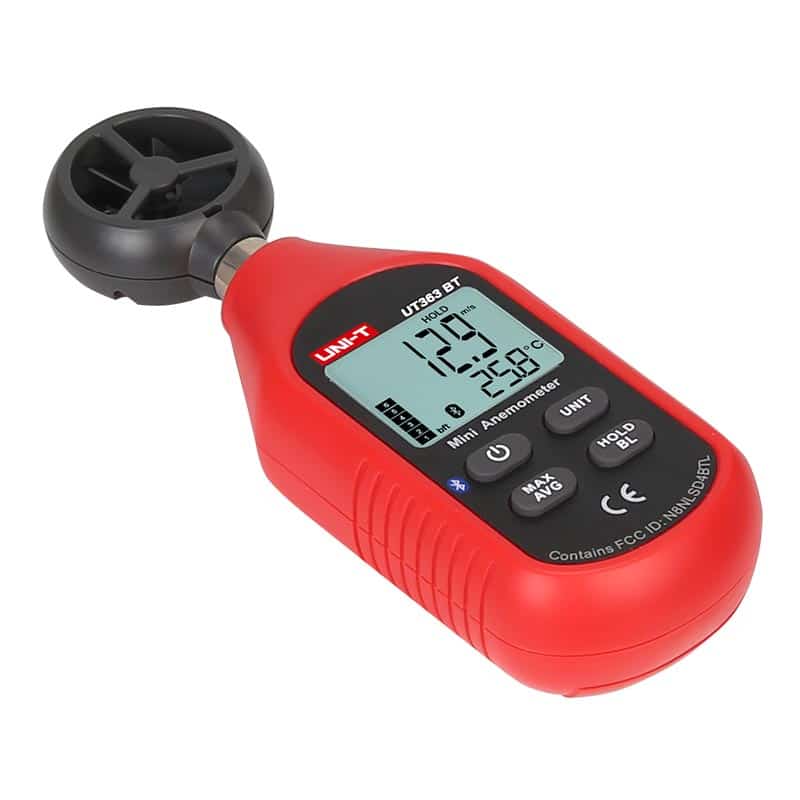Top Functions to Seek in an Effective Anemometer for Accurate Wind Measurement
Top Functions to Seek in an Effective Anemometer for Accurate Wind Measurement
Blog Article
Anemometers Unveiled: Comprehending Their Value in Environmental Tracking and Security Steps
The function of anemometers in environmental surveillance and precaution is commonly undervalued, yet their relevance is obvious. These instruments have a long background rooted in clinical query and technical advancements, evolving to come to be necessary devices in numerous areas. From weather forecasting to air travel safety and security, anemometers play an important role in offering accurate information that notifies decision-making procedures and enhances overall safety and security. Recognizing the intricacies of anemometers unveils a world of important understandings that are essential to our understanding of the environment and the steps we require to ensure safety.
Background of Anemometers
The development of anemometers can be mapped back to the ancient human beings where basic wind determining gadgets were very first used. These very early wind dimension devices laid the structure for the advancement of more sophisticated anemometers with time. Among the earliest well-known anemometers was the hemispherical cup anemometer created by Leon Battista Alberti in the 15th century. This style was composed of 4 hemispherical mugs that collected wind power, giving a measurement of its intensity based upon the rate of rotation.
Over the years, innovations in innovation led to the advancement of more modern anemometers, consisting of ultrasonic anemometers and laser Doppler anemometers, supplying enhanced accuracy and effectiveness in determining wind speed and instructions. The background of anemometers showcases an amazing trip of innovation and development in the field of meteorology.
Sorts Of Anemometers
Throughout the area of weather forecasting, different sorts of anemometers have been created to accurately measure wind rate and instructions. The most common type is the cup anemometer, which contains three or 4 cups mounted on straight arms that turn with the wind. As the mugs spin, the speed at which they rotate is straight proportional to the wind speed. One more widely used type is the vane anemometer, which features a tail or fin that straightens itself with the wind direction. This alignment allows the device to establish the wind instructions. Sonic anemometers use ultrasonic signals to gauge wind rate and instructions accurately. They are generally utilized in research applications because of their high precision. Hot-wire anemometers run based on the concept that the cooling impact of wind on a warmed wire is symmetrical to the wind speed. These anemometers appropriate for measuring low wind speeds with high precision. Each type of anemometer has its toughness and is chosen based upon the specific needs of the monitoring job handy.
Applications in Weather Forecasting
Having actually discussed the different kinds of anemometers made use of in meteorology for measuring wind speed and direction, it is important to explore their useful applications in the field. Anemometers play a crucial function in weather forecasting by giving accurate and real-time data on wind conditions (anemometer). Meteorologists use anemometers to check wind rate and instructions to anticipate climate patterns, concern cautions for extreme climate occasions like storms, twisters, and storms, and analyze weather for aviation safety
In weather forecasting, anemometers aid in recognizing neighborhood and regional wind patterns, which are vital for predicting weather changes and figuring out weather trends. These tools are additionally utilized in research study to examine microclimates, urban warmth islands, and air pollution diffusion. In addition, anemometers are utilized in agriculture to maximize plant monitoring practices, such as watering and pesticide application, based upon wind conditions.
Significance in Air Travel Safety
An essential facet of making sure aviation safety and security lies in the meticulous surveillance of wind conditions making use of anemometers. Anemometers play a vital duty in air travel by providing real-time information on wind rate and direction, aiding pilots in making educated decisions throughout touchdown, take-off, and flight. Uncertain and solid winds can substantially impact airplane procedures, making it vital for aeronautics authorities to depend on exact wind measurements to make certain the safety of travelers and staff.

In the dynamic atmosphere of aviation, where also small modifications in wind rate and direction can have profound effects, anemometers stand as indispensable tools for advertising secure and secure flight.
Function in Environmental Study
How do anemometers add to developments in environmental research? Anemometers play an essential function in ecological study by giving crucial information on wind rate and direction. This info is crucial for understanding numerous climatic processes, such as air pollution dispersion, weather condition patterns, and environment adjustment. By accurately measuring wind qualities, anemometers aid scientists assess the movement of pollutants in the air, examine the effect of commercial exhausts, and forecast the spread of contaminants in the environment.


Verdict
In final thought, anemometers have played a critical role in environmental surveillance and security measures. Recognizing the importance of anemometers is crucial for accurately determining wind speed and instructions, which is vital for forecasting weather condition patterns, guaranteeing safe air travel operations, and carrying out environmental research studies.
One of the earliest well-known anemometers was the hemispherical cup anemometer developed by Leon Battista Alberti in the 15th century. Over the years, developments in modern technology led to the advancement of even more modern anemometers, including ultrasonic anemometers and laser Doppler anemometers, offering enhanced accuracy and efficiency in gauging wind speed and instructions. Hot-wire anemometers run based on the principle that the cooling result of wind on a heated cord is proportional to the wind rate. Meteorologists use anemometers to keep track of wind speed and direction to anticipate weather patterns, problem cautions for extreme weather events like storms, twisters, and storms, and evaluate climatic problems for aeronautics safety.
Comprehending the value of anemometers is necessary for accurately measuring wind speed and direction, which is crucial for anticipating climate patterns, making sure safe aviation operations, and carrying out environmental research studies. (anemometer)
Report this page